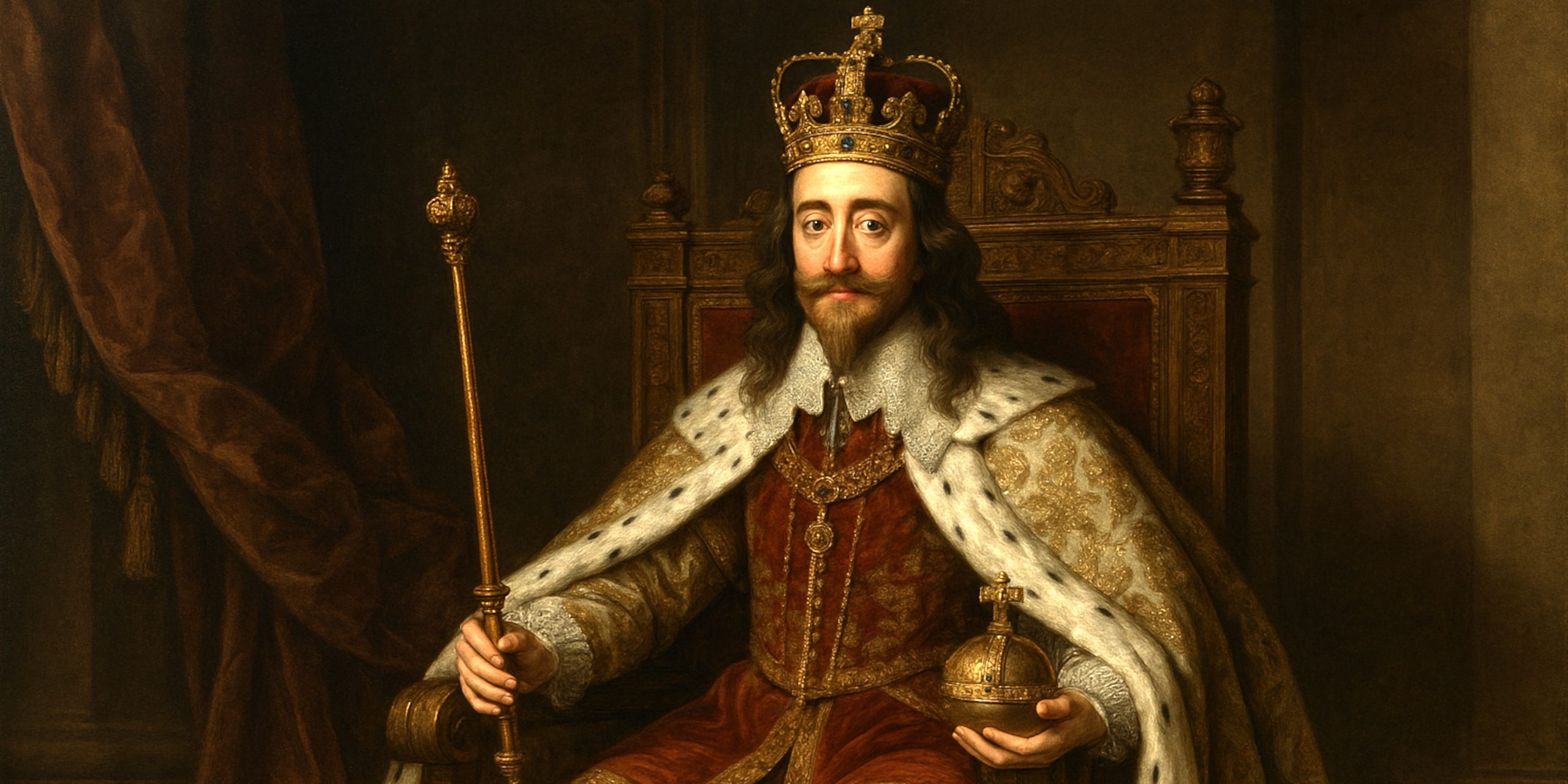
Charles I, born in 1600 and executed in 1649, remains one of the most divisive monarchs in British history. His reign marked a turbulent period in English politics, religion and governance, ending in civil war, regicide, and the brief abolition of the monarchy. He ruled not only over England but also Scotland and Ireland, and his policies left a legacy that shaped the constitutional direction of the United Kingdom.
Early Life and Ascension
Charles was the second son of James VI of Scotland (later James I of England) and Anne of Denmark. Born in Fife, he was initially not expected to become king, but the death of his elder brother Henry in 1612 altered the succession. Shy, devout, and physically delicate in childhood, Charles grew into a reserved and principled man. When his father died in 1625, Charles ascended the throne at the age of 24.
His marriage to the French Catholic princess Henrietta Maria caused suspicion among his Protestant subjects, especially the Puritans, and would remain a source of political and religious tension throughout his reign.
Rule Without Parliament
Charles’s relationship with Parliament quickly soured. His belief in the divine right of kings meant he expected loyalty and deference, but MPs increasingly demanded a say in matters of taxation and policy. After multiple clashes, Charles dissolved Parliament in 1629 and ruled alone for eleven years, a period often referred to as the Personal Rule or the Eleven Years’ Tyranny.
During this time, he levied controversial taxes such as Ship Money and relied on the courts, particularly the Star Chamber, to enforce his will. These measures alienated large segments of the population and generated widespread resentment.
Religious Policies and Scottish Conflict
Charles’s attempts to impose Anglican-style worship in Scotland backfired. In 1637, his introduction of the English Book of Common Prayer into Scottish churches led to fierce resistance and the signing of the National Covenant in 1638. This triggered the Bishops’ Wars, forcing Charles to recall Parliament in 1640 in order to raise funds for his military campaigns.
This ‘Short Parliament’ lasted only three weeks. He dissolved it again, but financial and political pressure forced him to convene the Long Parliament later that year. By now, opposition to his rule had hardened.
The English Civil War
Tensions escalated into open conflict in 1642. Parliament raised its own army under the command of the Earl of Essex and later Oliver Cromwell. Charles, supported by Royalist forces known as Cavaliers, based his court in Oxford. The war lasted from 1642 to 1646, followed by a second phase in 1648.
Charles’s refusal to compromise, even when in captivity, led to increasing frustration. His secret negotiations with the Scots and attempts to divide his enemies only deepened mistrust. Eventually, he was put on trial by a specially convened High Court of Justice.
Trial and Execution
In January 1649, Charles I was found guilty of high treason. He refused to recognise the legitimacy of the court and conducted himself with calm defiance throughout the proceedings. On 30 January, he was executed outside the Banqueting House in Whitehall, London. His death marked the first time a reigning English monarch had been tried and executed by his own people.
Legacy and Historical Impact
Charles’s execution shocked Europe and ushered in the brief republican period known as the Commonwealth under Oliver Cromwell. Though the monarchy was restored in 1660 under his son, Charles II, the events of Charles I’s reign permanently altered the balance of power between crown and Parliament.
His belief in absolute monarchy clashed fatally with the growing demand for constitutional limits on royal authority. In many ways, his reign marked the end of the medieval model of kingship in England and laid the groundwork for parliamentary democracy.
His final words, “I am the king of England; I am the martyr of the people,” have echoed through British history, casting him as either a tragic figure or an obstinate tyrant, depending on interpretation.
Burial and Artefacts
Charles was buried in St George’s Chapel at Windsor Castle. His body was not displayed publicly, and there was no official funeral. In the centuries since, artefacts linked to his execution, including relics of his clothing and the execution block, have become items of historical fascination.
He is remembered by some within the Anglican Church as a martyr, and his feast day, King Charles the Martyr, is observed on 30 January by certain Anglo-Catholics.
The Seven Swords takeaway
Charles I’s reign is a study in conflict between authority and accountability. His downfall came not because he lacked conviction, but because he clung to a system that no longer reflected the political and religious realities of the time. His story remains a turning point in British constitutional history.
Watch the documentary:



